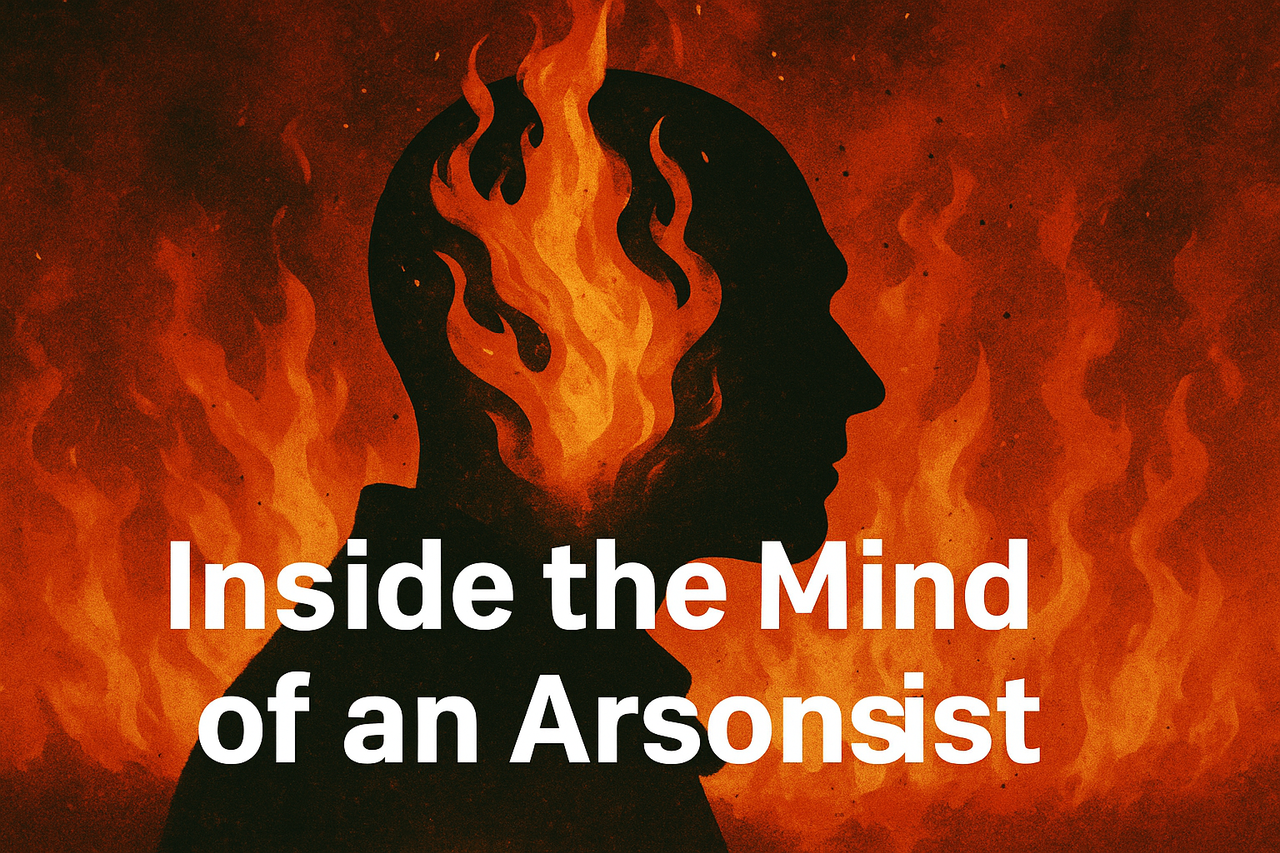When Fire Isn’t Just Flames: The Disturbing Psychology of Arsonists
1 comment
Three days ago, the morning began on our school compound like any other. The usual call to prayer roused us from our beds, and I joined the others at the mosque, our voices weaving into a collective hymn of peace after the obligatory prayer. But that peace was violently torn when the cooks from the kitchen barged in, faces pale, voices trembling: “Fire! There’s a fire in the hostel!”
We all rushed towards the hostel like a flood. What we found left us frozen. Flames roared out of two adjoining rooms on one side of the building, and, curiously, another single room on the opposite block across an open courtyard. The firefighting spirit in everyone kicked in to keep the entire hostel from going up in smoke. When the blaze was extinguished, the questions began.
The fans had been switched off. The sockets weren’t tampered with. The ceilings were largely untouched. There was no indication that the fires had spread from one room to the other. That meant the impossible had happened: the fires had started independently. We had no other choice but to consider what no one wanted to say aloud: someone had set the rooms on fire.
That possibility left a chill in the air. Who would do such a thing? And more importantly, why? With no property stolen, no apparent vendetta, and no trail, it felt less like a crime of anger and more like one rooted in the mind.
The Psychological Profile of an Arsonist
Arson isn’t always committed by hardened criminals or serial fraudsters looking for an insurance payout. In fact, a significant number of arsonists have no prior criminal record. According to the Journal of Forensic Sciences, arson is often deeply psychological. Many cases stem from unaddressed emotional issues, mental illness, or trauma.
The American Psychological Association classifies arsonists into several psychological profiles: the revenge seeker, the attention seeker, the thrill seeker, the vandal, and the one driven by mental illness. Some do it to get even, others to be seen. A smaller but important group lights fires just to watch things burn — literally.

Pyromania: Fire as Obsession
This rare condition is known as pyromania, an impulse control disorder where an individual sets fires to relieve tension or for gratification. Pyromaniacs don’t do it for revenge or gain. They often feel an uncontrollable urge to start fires and are fascinated by their aftermath.
According to DSM-5, pyromania is characterized by:
- Multiple deliberate fire-setting events
- A sense of tension before the act
- Relief or pleasure after the fire is started
- Obsession with fire and its related paraphernalia
In school or community settings, pyromaniacs might even blend in as bystanders or helpers after the climax of committing the act. They return to watch the flames or assist with putting them out. It’s a troubling mix of obsession and social camouflage.
Unresolved Trauma and Youth Arson
But it doesn’t always take a diagnosed disorder to spark such behavior. Young people, especially adolescents, may commit arson as an outlet for stress, anger, or trauma. Research in Child and Adolescent Psychiatry and Mental Health links fire-setting in youth to neglect, abuse, or emotional instability.
In some cases, the fire isn’t about destruction but about control. In an environment where someone feels powerless or invisible, watching fire respond to their command can be intoxicating. It can make them feel noticed, powerful, or even safe in a twisted way.
Why Do They Do It?
From my findings, understanding motivation is key to prevention. The rewards, psychologically speaking, vary:
- Control: Over one’s surroundings or over the people affected
- Relief: From built-up internal pressure or anxiety
- Attention: Both from peers and adults
- Power: Especially in environments that feel otherwise oppressive
In schools, especially boarding environments, where emotional suppression is often the norm, such dangerous behaviors can sometimes be a manifestation of internalized pain.
Preventing the Next Fire
If this experience taught me anything, it’s that fire prevention is about more than extinguishers and drills. It’s about seeing the smoke in people, especially the quiet, withdrawn, or erratic students who might be struggling silently.
As I walked through the blackened rooms, the smell of soot clinging to the air, I couldn’t stop asking myself who might have done this, and why. We may never know, even though I am determined to pursue it to a logical conclusion. But we must be ready to accept that not all wounds bleed visibly. Some show up as fire.
In every child who acts out, there's often a deeper story. Fire-setting might just be their way of asking for help in a language they've never been taught to speak.
Resources
- American Psychological Association – Understanding Arson
- FBI Crime Classification Manual – Arson Motives
- National Fire Protection Association (NFPA) – Arson Statistics
- Journal of Forensic Sciences – Psychological Profiles of Arsonists
- National Center for Biotechnology Information – Arson and Mental Illness
- Psychology Today – Fire-setting Behavior
- British Journal of Psychiatry – Arson: A Review of the Literature
Posted Using INLEO
Comments